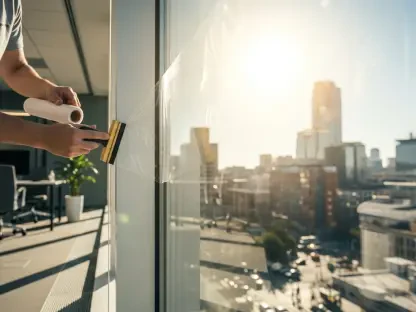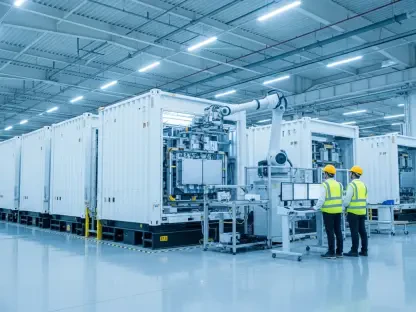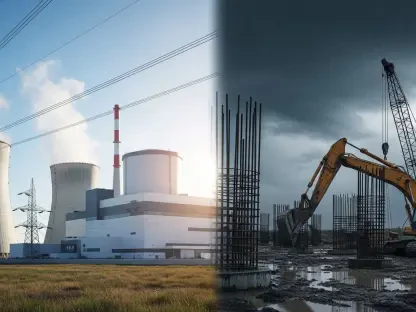New York is at the forefront of a legislative push to reduce greenhouse gas emissions and transition to a low-carbon future. Recent efforts in Albany focus on promoting biofuels and other alternative fuels for heating oil and transportation. These initiatives are seen as a “bridge” to full electrification, using low-carbon, renewable energy sources to meet statewide environmental targets. By leveraging these innovative solutions, legislators aim to make significant strides toward sustainability while keeping pace with long-term climate action plans. The strategy hinges on balancing current energy demands with environmental imperatives, ensuring a gradual, yet effective shift away from fossil fuels.
Legislative Efforts and Environmental Goals
State lawmakers are deeply committed to the Climate Leadership and Community Protection Act, aiming to cut greenhouse gas emissions significantly. The goal is to achieve all electricity from emission-free sources by 2040 and reduce statewide emissions by 85% from 1990 levels by 2050. These ambitious targets are crucial for combating global climate change and transitioning away from fossil fuels. This legislative framework underscores the urgency of addressing climate change and seeks to establish New York as a leader in renewable energy initiatives. Through coordinated efforts and forward-thinking policies, the state aspires to create a cleaner, greener future for its residents.
The legislative packages, including the “Clean Fuel Standard” bill, incentivize companies to adopt low-carbon emission transportation methods. By incorporating low-carbon, non-petroleum fuels into mainstream use, the state hopes to blend these with fossil fuels initially, gradually moving towards full electrification. This approach not only seeks to reduce emissions immediately but also aims to stimulate innovation and investment in alternative fuels. Lawmakers believe that such incentives will encourage businesses to embrace more sustainable practices, fostering a market for cleaner energy solutions. Ultimately, these policies are designed to pave the way for a seamless transition to a fully electrified energy grid.
The Role of Biofuels in the Transition
Biofuels are a critical component of New York’s strategy to lower energy heating and fuel emissions. Fuels derived from biological sources, such as bio-diesel made from vegetable oils and animal fats, offer varied applications and emit fewer greenhouse gases than fossil fuels. However, their indirect emissions during production phases are still noteworthy. Nevertheless, biofuels present a viable interim solution as the state moves toward more sustainable energy options. With targeted investments and advancements in technology, the efficiency and environmental impact of biofuels can be further optimized, positioning them as a key element in New York’s low-carbon strategy.
State lawmakers believe that using low-carbon fuels can immediately reduce emissions in both mechanical and carbon footprint terms. The Clean Fuel Standard is expected to have an immediate impact, emphasizing the importance of reducing systemic greenhouse gas emissions in the transportation sector promptly. By prioritizing biofuels and other renewable resources, the state aims to mitigate the environmental impact of traditional fuels while setting the stage for more comprehensive electrification efforts. This multifaceted approach reflects a nuanced understanding of the energy transition, acknowledging the need for short-term solutions that support long-term sustainability goals.
Challenges and Concerns
Despite the potential benefits, challenges remain in the broader adoption of biofuels. Concerns have been raised about the environmental friendliness of some “clean fuels.” Regulatory authorities stress the importance of considering the lifecycle emissions impacts of most biofuels, such as corn-based biofuels and biodiesel. These lifecycle assessments are crucial for understanding the true environmental impact of alternative fuels, ensuring that they deliver genuine sustainability benefits. Without comprehensive evaluation and oversight, there is a risk that certain biofuels may fall short of their intended goals, potentially undermining broader climate action efforts.
Materials like corn, soybeans, trees, and crops are specifically cultivated to create fuel, impacting their environmental efficiency. The feasibility of relying solely on biofuels is questioned, especially as the state continues to develop and scale up toward full electrification. Balancing the demands of food production with biofuel cultivation also presents significant logistical and ethical challenges. Policymakers must navigate these complexities to ensure that biofuel initiatives do not inadvertently exacerbate other environmental or social issues. Effective regulation and consistent monitoring will be essential to address these concerns and maintain the integrity of New York’s sustainable energy transition.
The Path Forward
New York is leading the legislative charge to cut down on greenhouse gas emissions and steer toward a low-carbon future. Current efforts in Albany are centered on promoting biofuels and other alternative fuels for both heating oil and transportation needs. These initiatives are viewed as a transitional “bridge” that will eventually lead to full electrification by utilizing low-carbon, renewable energy sources. The goal is to help the state meet its environmental targets while gradually reducing reliance on fossil fuels.
In this context, lawmakers are focusing on creating a balanced strategy that addresses existing energy demands while still adhering to strict environmental mandates. By implementing these innovative fuel solutions, they intend to make meaningful progress toward sustainability. The transition is designed to be gradual but effective, aiming for a substantial reduction in carbon emissions over time.
Legislators are keen on ensuring that these measures are in line with New York’s long-term climate action plans. This means not only pushing forward with greener energy alternatives but also making sure that the state’s infrastructure and policies keep up with these advancements. The overarching strategy involves careful planning and coordination to ensure that the shift away from fossil fuels is both practical and impactful, meeting present-day energy needs without compromising environmental goals.









